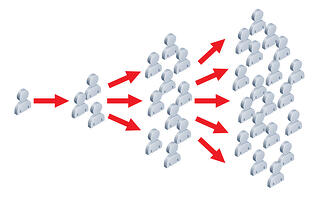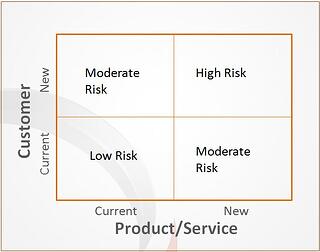Growth Insights for CEOs

Outsider Insights | From Hustle to System: Why More CEOs Are Rebuilding Their Sales Function
Outsider Insights
Across Chief Outsiders, we talk to hundreds of CEOs every month. In this new series, we explore the trends and challenges we’re hearing from these discussions – and what you can do if you’re facing the same issues in your business.
Recent Posts

Don’t Let Your Business Journey Become “The Ride From Hell”
Sun, Aug 18, 2013 — My wife and I recently took a trip to Virginia to help my daughter look for an apartment as she is moving from New Jersey for her first post-college job. We were lucky enough to find a nice place in a good neighborhood where she and a friend from college will live in their first “grown-up” apartment. This made all of us very happy and certainly helped relieve some parental anxiety. Our task finished, we headed back to NJ at around 1pm on Sunday, and that’s when it happened. Our pleasant weekend was hijacked by one of the worst road trips I’ve ever taken, as no matter which way we went, we ran into traffic tie-ups and delays. We finally pulled up the driveway around 9 pm both aggravated and exhausted. Once I had a chance to relax and catch my breath, I got to thinking of ways to equate the ride to lessons I can use in my business life and work with growth-oriented midmarket companies.

6 Steps to Understanding and Adapting to the Contours of Change
Wed, Aug 14, 2013 — Markets, like the companies and people who participate in them, are constantly evolving. Many an organization has seen its growth derailed or even faced its demise for failing to pick up or act on a key evolution in their market. The news about the sale of the Washington Post to Amazon founder Jeff Bezos brought that point back to center stage.

Great CEOs “Eat a Frog First Thing Every Day”
Wed, Aug 7, 2013 — “If you eat a frog first thing in the morning that will probably be the worst thing you do all day.” – Mark Twain. Mark Twain truly had a way with words. Most of us have read at least one of his 28 books. Much has been written about his famous “eat the frog first” quotation including articles that question whether he actually said or wrote this. Regardless of the truth, the analogy is intended to help great leaders tackle more difficult, dreaded and distasteful actions first everyday. There are some business coaches that don’t agree with doing the most unpleasant work first, but they all agree that successful business leaders are great at prioritizing their activities every day.
Stay up-to-date with the latest from Chief Outsiders

Hire Slow and Fire Fast Part I
Sat, Jun 8, 2013 — Today's blog is by guest blogger Kevin Dincher. 25 years ago as a new manager, I had to fire an employee for the first time. When I inherited her, she was a long-time employee with a lengthy history of poor quality work, low productivity, negativity and troublesome relationships. Firing her was drawn-out and excruciating—but I learned early on the importance of hiring the right people—and not hanging on to the wrong ones.

Want to Grow your Company? Let’s Talk!
Sun, Apr 7, 2013 — Today's blog is by guest blogger, Kevin P. Dincher, Crazy Moon Consulting, LLC

International growth: A balance of competencies
Sun, Mar 3, 2013 — Our blog today is by guest blogger Mark Buss.

D.A.R.E. to Grow
Wed, Feb 20, 2013 — Sometimes it is difficult for our organizations to take the steps necessary to grow – to change – to leave what is comfortable and strive for something more. We stop ourselves with questions like: How will my organization adapt to the changes? Can we handle the new challenges? Do we have the skills required to meet the new demands? Why should we upset what is already going well? It makes perfect sense for us to question. In fact, we wouldn’t be doing our jobs as leaders if we didn’t. At some point though, if we want to move forward, we must also move beyond the questions. We must take our own dare, if you will – and D.A.R.E. to grow. Here are some thoughts to get us started. D = Discover

6 Ways to Turn Customers into Advocates with a Brand Ambassador Program
Sun, Dec 2, 2012 — Harley Davidson, Intel, Starbucks, Apple. We all know brands that have a loyal group of customers, brand ambassadors, who love to talk about the brand and recommend them to their friends and peers. And these recommendations drive sales. According to the Boston Consulting Group, 9 out of 10 consumers and over 50% of B2B customers trust recommendations from friends, colleagues and peers when making their purchasing decisions. You can invest lots of money in marketing campaigns, but for many companies the most powerful sales driver is a recommendation from a brand ambassador. And a strategic brand ambassador program may be the difference-maker in your bottom line.

Small Business Thrashing: When Nimble Makes You Numb
Thu, Nov 15, 2012 — Opportunities Galore… This small company is 15 years old, and has a few million in sales. The founder has returned from semi-retirement to help lead and reinvigorate the team. In the past year or so, the firm introduced a number of innovative new services, including its first consumer-direct offering. It has also partnered with several adjacent industry players and is leading the effort to capture yet another clear opportunity. The small staff works tirelessly to support every new initiative while keeping the wheels on its core offering that delivers 85% of its revenue. While sales overall are not expanding and no one has received a pay increase in years, there are no complaints. These are good people. And they know the power of working nimbly and collaboratively. …But Hungering For Growth Like many of businesses of their size and age, this company hungers for faster, more predictable growth. They are tired of being small when they are part of a market that seems so promising. During our first meeting, it was immediately clear that the company leadership consists of a sharp group of professionals. In our exploratory work session (90 minute complimentary consultation) everyone engaged, all contributing, respectfully listening to new ideas, and adding value to our conversation.
.png?width=1500&height=398&name=CO_Corporate%20Logo%202021_4C_HOR_FNL-1%20(1).png)